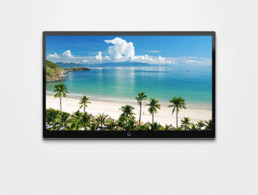4K TVs: What You Should Know
Unlike many websites that tend to use Ultra High Definition (UHD) and 4K interchangeably, the truth is a 4K screen is a type of Ultra High Definition display that has very specific resolution standards. 4K displays usually have screen resolutions no less than 3,840 by 2,160 pixels. To explain 4K very simply, the more pixels you have the better, sharper, and more vibrant the image will be. Currently, the highest standard of resolution for most home televisions is no higher than 2,160 pixels (this is considered standard Ultra High Definition). For most average home television consumers their home television resolution isn’t higher than 1,080 pixels.
Clearly, the development of 4K hardware represents a significant leap forward in display and light technology. Like usual, the broadcast industry and software needed to make 4K quality content commonplace is still lagging behind a bit. This means there are a few channels that support 4K content available for those who have already run out and purchased a 4K television. If that’s you, no need to panic, 4K technology is expected to overtake current industry standards in both in-home movies and television. It’s only a matter of time before the rest of the technology world catches up.
Testing and improving these displays requires highly accurate measuring instruments. Konica Minolta offers a number of light measurement systems capable of effectively testing and ensuring the quality of your display. Speak to one of our customer service professionals today to learn more!
The following light measurement systems are recommended for testing and evaluating displays:










